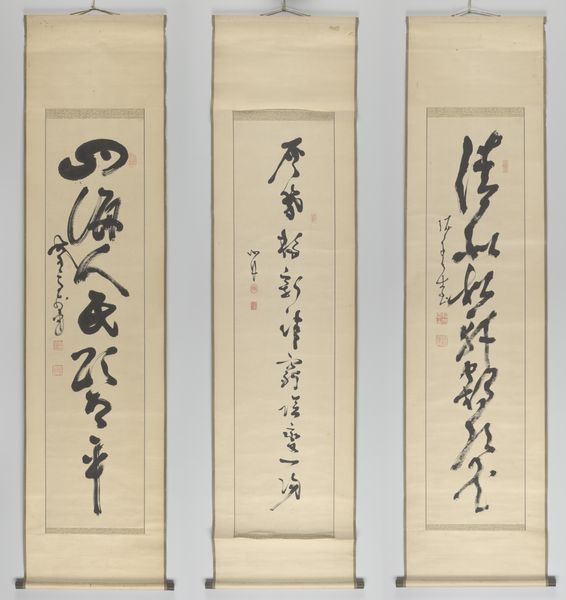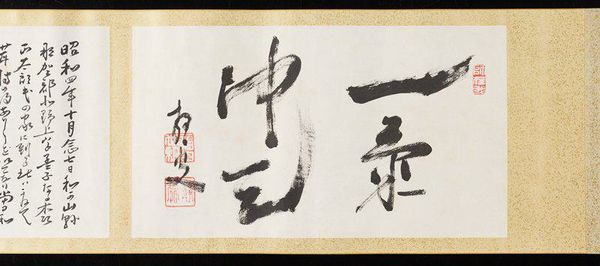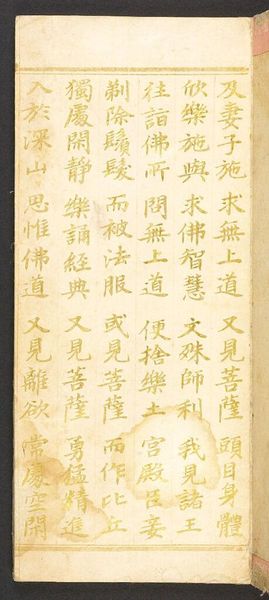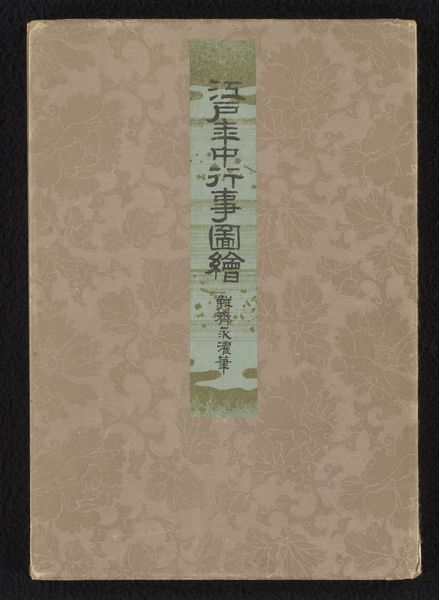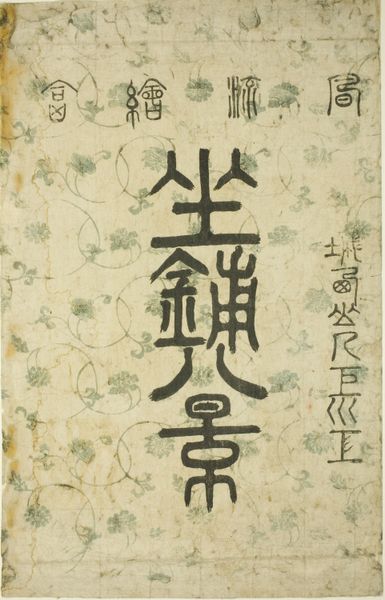![Fourteen-Character Couplet in Bronze Script (Korean, 'KÅm-mun'; Chinese, 'Jinwen') by O Se-ch'ang (also known by sobriquet ['ho']: Wi-ch'ang)](/_next/image?url=https%3A%2F%2Fd2w8kbdekdi1gv.cloudfront.net%2FeyJidWNrZXQiOiAiYXJ0ZXJhLWltYWdlcy1idWNrZXQiLCAia2V5IjogImFydHdvcmtzLzc1MGEwNzA3LTNkMzctNGFkOC04N2FjLTY5N2Y0MzQzYWU2ZC83NTBhMDcwNy0zZDM3LTRhZDgtODdhYy02OTdmNDM0M2FlNmRfZnVsbC5qcGciLCAiZWRpdHMiOiB7InJlc2l6ZSI6IHsid2lkdGgiOiAxOTIwLCAiaGVpZ2h0IjogMTkyMCwgImZpdCI6ICJpbnNpZGUifX19&w=1200&q=75)
Fourteen-Character Couplet in Bronze Script (Korean, 'KÅm-mun'; Chinese, 'Jinwen') late 19th-first third 20th century
Dimensions: each couplet: 123 x 26.4 cm (48 7/16 x 10 3/8 in.)
Copyright: CC0 1.0
Curator: Here we have a pair of scrolls featuring calligraphy by O Se-ch'ang, also known as Wi-ch'ang, rendered in bronze script, or 'KÅm-mun'. Editor: The characters give the impression of ancient ritual vessels cast in bronze, monumental and weighty. Curator: O Se-ch'ang was deeply interested in epigraphy, the study of inscriptions, and here he recreates the texture and form of early bronze inscriptions. Editor: So, he’s deliberately invoking the past, using these characters that reference a historical moment for contemporary purposes. How was this work perceived in its time? Curator: Calligraphy was a highly valued art form, judged on the artist’s skill, knowledge, and personal expression. The choice of bronze script signaled erudition and connection to a distant, revered past. Editor: It’s fascinating how the artist uses the materiality of ink and paper to evoke metal. Curator: Indeed, and these scrolls, each measuring over a meter tall, would have been displayed to demonstrate the owner's refined taste. Editor: Makes you wonder about the role of art then, as a marker of social standing.
Comments
No comments
Be the first to comment and join the conversation on the ultimate creative platform.




